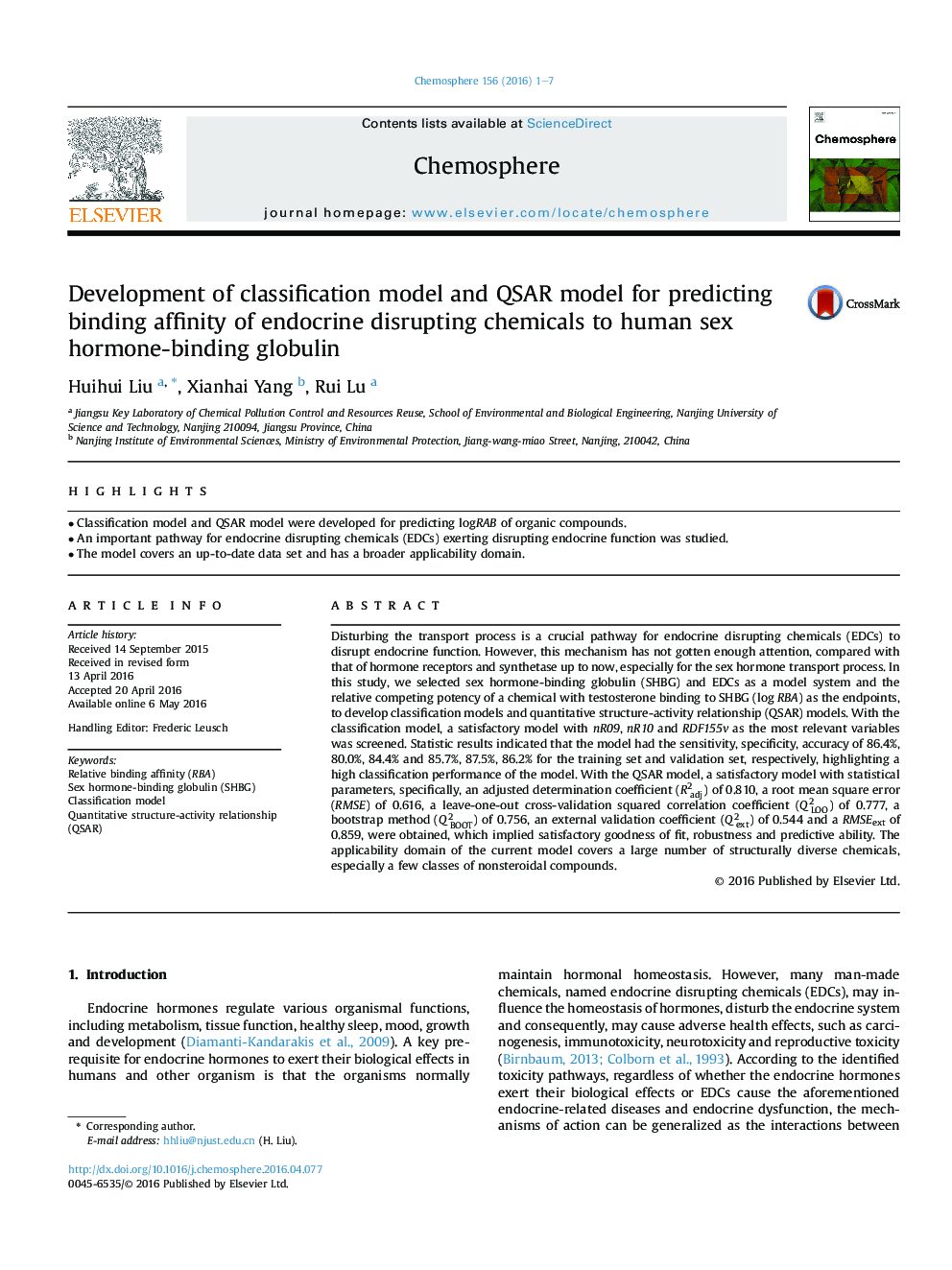| کد مقاله | کد نشریه | سال انتشار | مقاله انگلیسی | نسخه تمام متن |
|---|---|---|---|---|
| 4407714 | 1618815 | 2016 | 7 صفحه PDF | دانلود رایگان |

• Classification model and QSAR model were developed for predicting logRAB of organic compounds.
• An important pathway for endocrine disrupting chemicals (EDCs) exerting disrupting endocrine function was studied.
• The model covers an up-to-date data set and has a broader applicability domain.
Disturbing the transport process is a crucial pathway for endocrine disrupting chemicals (EDCs) to disrupt endocrine function. However, this mechanism has not gotten enough attention, compared with that of hormone receptors and synthetase up to now, especially for the sex hormone transport process. In this study, we selected sex hormone-binding globulin (SHBG) and EDCs as a model system and the relative competing potency of a chemical with testosterone binding to SHBG (log RBA) as the endpoints, to develop classification models and quantitative structure-activity relationship (QSAR) models. With the classification model, a satisfactory model with nR09, nR10 and RDF155v as the most relevant variables was screened. Statistic results indicated that the model had the sensitivity, specificity, accuracy of 86.4%, 80.0%, 84.4% and 85.7%, 87.5%, 86.2% for the training set and validation set, respectively, highlighting a high classification performance of the model. With the QSAR model, a satisfactory model with statistical parameters, specifically, an adjusted determination coefficient (Radj2) of 0.810, a root mean square error (RMSE ) of 0.616, a leave-one-out cross-validation squared correlation coefficient (QLOO2) of 0.777, a bootstrap method (QBOOT2) of 0.756, an external validation coefficient (Qext2) of 0.544 and a RMSEext of 0.859, were obtained, which implied satisfactory goodness of fit, robustness and predictive ability. The applicability domain of the current model covers a large number of structurally diverse chemicals, especially a few classes of nonsteroidal compounds.
Journal: Chemosphere - Volume 156, August 2016, Pages 1–7